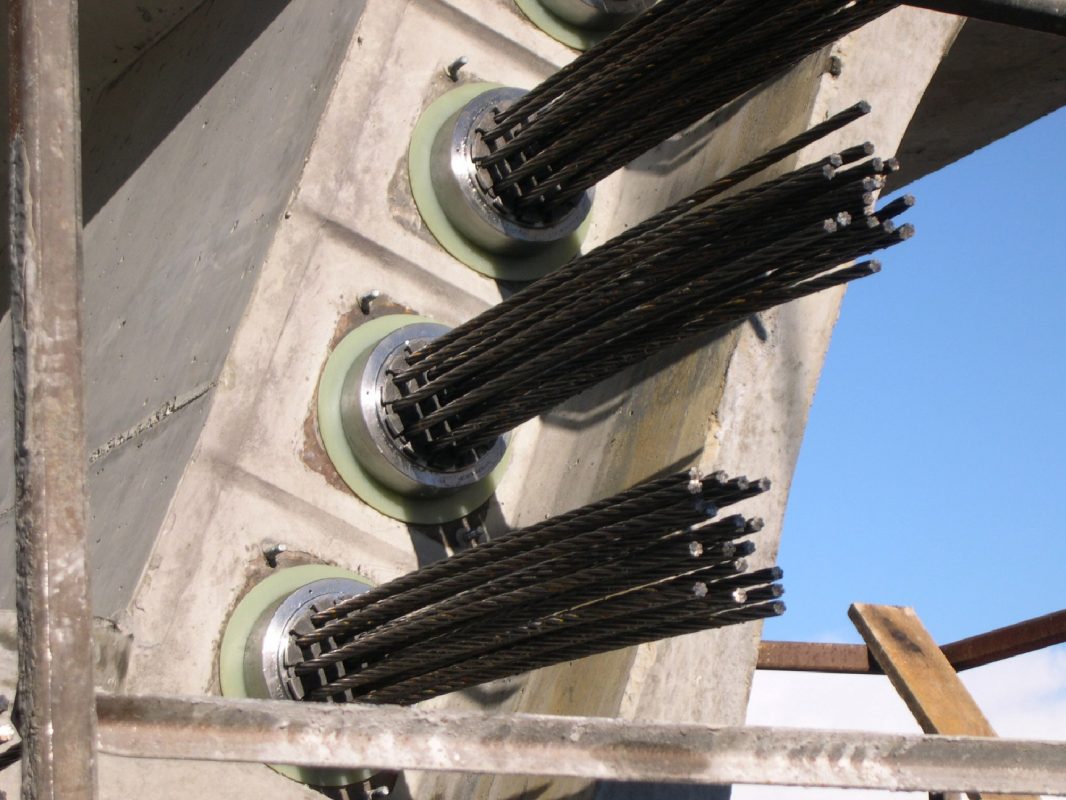Very high durability and the possibility for long-term monitoring and inspection of post-tensioning tendons in concrete structures are obtained with electrically isolated tendons.
Post-tensioning created new possibilities for the structural use of concrete: large span concrete bridges, special containment vessels, domes, nuclear and marine structures. At present, most of the railway and highway bridges or flyovers consist of post-tensioned cast-in place or segmental concrete structures. The high-strength steels used in the tendons are more susceptible to corrosion then normal reinforcing steel and quite brittle, thus they can break without deformation. The traditional corrugated metallic ducts do not present a barrier against ingress of chloride containing water and corrosion, thus severe corrosion problems and even collapses in the 1990’ies are documented despite a generally good long-term behaviour. A major problem is that no established non-destructive technique for monitoring and inspection of these tendons that contribute decisively to the serviceability, safety and durability of pre-stressed concrete structures does exist. Industry, designers and owners were thus looking for a more durable solution with integrated monitoring and inspection possibility.

Electrically isolated tendons
Electrically isolated tendons (EIT) use the same technology as known from ground anchors: a tight polymer duct that encapsulates the high-strength steels, grouting that creates a protective alkaline environment for the steel strands and an anchor head that is isolated from the ground and the normal reinforcement of the structure. This approach has been developed in Switzerland since about 1995; industry (VSL), owners (Swiss Federal Road Authorities, Swiss Federal Railways) and research institutions (IfB at ETH Zurich) jointly worked on the system components, the design and inspection and monitoring techniques. Two flyovers were constructed as pilot projects. Based on this experience a first guideline was published in 2001 “Measures to ensure the durability of post-tensioning tendons in bridges”. The plastic duct is a tight, resistant encapsulation that protects the steel strands against corrosion and reduces fretting fatigue. The use of electrically isolated anchorages (Fig. 1) allows to check the integrity of the plastic duct during and after construction and to monitor the corrosion protection of the high-strength steel during the whole service life with electrical impedance measurements. Applications of EIT in structures worldwide has proven this successful approach.
Protection level three (PL3)
As design strategy a multi-layer protection approach is recommended (fib bulletin 33: Durability of post-tensioning tendons). Primary concern is to minimize the contact of (chloride containing) water with the high-strength steel in the tendons. Electrically isolated tendons fulfil the requirements of the highest protection level PL3 according to fib. This is achieved by a tight, corrugated polymer duct filled with alkaline grout that protects the high-strength steel. The electrically isolated anchorages permit easy monitoring and inspection of the tendons by measuring simply the electrical impedance between the high-strength steel in the ducts and the external normal reinforcement. So the quality of encapsulation and thus corrosion protection can be monitored or inspected at any time
More information:
fib bulletin 33: Durability of post-tensioning tendons
web site: http://www.ifb.ethz.ch/corrosion/research/EIT_tendons
Prof. Dr. Bernhard Elsener
ETH Zurich, Institute for Building Materials
CH-8093 Zurich








